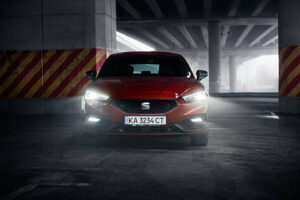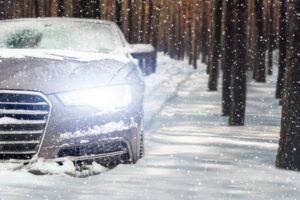What is Too Bright? Knowledge of True vs Perceived Brightness and legal concerns on high lumen headlights
One car modification in trend today is the upgrade to the brightest led headlights. But is more-light better all the time? That is a more complicated question than you might suppose. Real brightness, which the manufacturer uses to label the box, may give people eyebrows to raise, yet perceived brightness, which your eyes are able to receive is where things get periled. Then there is the legal. It is not an every man for himself scene out there with high lumen bulbs. So here is what is important with the modern headlights explained down to a T actual output, perception of the human eye and how to still stay on the good side of the law.

Brightening up Brightness: Lumens Versus What You See
Technically speaking, lumens are a measurement of the amount of visible light that a source produces- that is it. It is a scientific figure, it is independent of temperament or lunar cycle. Putting on paper headlights that are formed as 6000 lumens and 2000 lumens, the former ought to be three times brighter. Simple, right? Yo-ho-ho.
The Science: Physical Brightness, Let Us Chat
Physical brightness can be reduced to raw lumens, color temperature (Kelvin) and beam pattern. Warm white 6500K LED provides cool light that may appear brighter to our eyes. Halogen headlights, which tend to be more towards 3200K, appear yellow by contrast. Not only are LEDs cooler in color, but also more energy-efficient to transform electricity into visible light. That is, they are able to put out substantial lumens without roasting themselves or your wires.
However, not every bulb with the label of being a bright one is exactly equal as far as the same lumen ratings go. Reflector/assembly design, manufacturing quality and clear lens also contribute to getting those photons on the pavement instead of being sprayed into the air. Funny lens or dewed case? Farewell successful luminosity.
Perception: Human eyes are not independent light meters
Imagine the following: you are at night and two cars are coming towards you. One is a clean tight beam that illuminates the road in an orderly manner. The other explosions illuminate everywhere, in some cases directly into your eyes. What do you guess is blinding? Everything concerning perceived brightness is associated with contrasts, color, glare and how your eyes respond to darkness. A dimmer bulb can also seem brighter when it is throwing a focused beam of light to cars coming toward it instead of brightening the highway.
Glare, reflecting off wet pavement, or scattering of streetlights that have not been well aimed all have the effect of blinding drivers and limiting your visual area. That is hazardous – no matter how many lumens the packaging may have. What happens is that our brains compound this. And, we always find it appealing to see light in otherwise dark areas. It is science that has a slight twist to it in the psychological aspect.
Headlight Technology: Other than Lumens
Pattern: Beam Pattern: the secret sauce
Lumens will tell you how much light you have to deal with. Beam pattern answers that question. LED and HID kits are designed to do more than large numbers, though, they are designed to sculpt the light. A well-designed pattern casts a crisp, horizontal cut-off and you can see some distance, but you do not burn out everybody’s eyes. Even bulbs with outrageous lumen levels can be ill-planned or improperly assembled and cause light to be flung about and induce hazardous glare.
Colors: The White Is Not Always Right
In an attempt to treat the ultra-white or even blue lights as brighter, drivers run behind them. However, the 4300 up to 5000K does an excellent job providing superior clarity with zero kickback during fog, rain, or in snow. Higher kelvin values would indeed make you have a poor contrast ability in the eyes when it comes to such lowly lit roads. The lightest is not necessarily (or necessarily) the best in day-to-day driving.

Lighting and Lenses: The Underrated Actors
The headlight housing in your car is not there or decoration. Contemporary projector lenses concentrate the beams and cast them on the downward direction. Conventional reflectors, though, bounce additional stray light around. Changing factory-matched halogeneous lumens to LED can increase lumens, but usually creates un-aimability and excess glare and reduced useful road lighting.
Legal Considerations: Playing by the Rules
The real thing about the law: The US Regulations
This is the one that catches you out even dyed in the wool gearheads. Federal motor vehicle safety standards (FMVSS 108) also specify brightness limits of head-lights in candela, not only lumens (100 forms the limit in candela, which is brighter than the 5000-lumen referred to above). These federal guidelines are applied by the majority of states and it is restricted in the levels of both output and the height of installations. HID/LED kits that are not DOT or SAE compliant may get you a ticket even when you insist that your lights are no more superior to that of the factory ones.
Other than the fines, a contravention of a setup illegal lighting may cause liability in case of an accident since one is seen as responsible because of dazzling or blinding someone. Your insurance companies can also doubt your arrangement.
Global Diversity: The Brightness Wars Overseas
The ones of UNECE in Europe are even more strict. Vehicles with very high output (far larger than the 1990s) require adaptive headlights, automatized leveling systems and even headlight washers. Going across the Atlantic? That 8,000-lumen kit Instagram-friendly may not be approved during a road check.

Maintenance and Adjustment of Headlights
It is not just the upgrades; the manner in which you direct the headlights is important. Even the DOT-approved unit becomes dangerous when they are tilted upwards by few degrees. Cheap headlight aiming may be performed in many shops and it is an important safety measure. Always check your lenses to see whether they are hazy; it is easy to get a cleaning kit which costs about 20 dollars to restore a serious brightness (and legality).
Golden Rule- Safe for You and Safe for Others:
At night, it is really effective to say, do to others. Even momentary blinding of another driver is dangerous to both parties. You desire to get to view as near as possible–but not to the prejudice of others. Aim your lights. Avoid meaningless sellers in the market, seek qualified products. and what will one do who flashes his lights at you? You have possibly excessively high beams.